-
 Predictable Data Centers
Predictable Data CentersAbstract
The Predictable Data Centers (PDC) project tackles the issue of unpredictable application performance in the cloud. A key contributor to such unpredictability is shared resources like network and storage. The bandwidth for a VM, when communicating with other VMs or with shared services (like Azure storage), can vary significantly; recent studies have observed bandwidth variability up to a factor of five. To address this, we have designed a predictable data center architecture whereby users get aggregate performance guarantees across shared resources. This talk provides a project overview with a focus on how predictable network and storage performance can be enabled. Through key scenarios of interest, I will illustrate how PDC can- (i) enable end-to-end performance guarantees in shared settings, (ii) provide performance benefits to both tenants and providers, and (iii) enable new pricing models that lead to a symbiotic tenant-provider relationship.
Biography
After finishing his PhD at Cornell University in 2009, Hitesh Ballani joined Microsoft Research (Cambridge, UK) as a researcher. His research focusses on networked systems with his work striking a balance between clean-slate and dirty-slate proposals. Currently he is working on problems concerning data center networks and protocols. Past work includes research in network management, routing, security and network architecture.
-
 Programming Proofs and Proving Programs (opens in new tab)
Programming Proofs and Proving Programs (opens in new tab)- Watch the Session
Abstract
Developers turn coffee into programs, whilst mathematicians turn it into proofs. Amazingly, proofs and programs are not just made from the same stuff, but there’s a strong sense in which they actually *are* the same stuff. The modern understanding of proofs, programs, and the correspondence between them, is one of the most significant intellectual developments of the 20th century. That understanding is now embodied in a radically new kind of language and software tool that could revolutionize both mathematics and software development in the twenty-first century.
Biography
Nick Benton is a Senior Researcher at Microsoft Research in Cambridge, working in the Programming Principles and Tools Group.
His research ranges from proof theory and categorical logic, through semantics of programming languages and static analyses, to programming language design and compiler implementation. Nick’s thesis was on strictness analysis and he has since worked on topics that include term calculi and categorical models for linear logic, MLj and SML.NET (optimizing compilers from SML to the JVM and .NET with extensions for interlanguage working), Polyphonic C#/Cω (C# with join-calculus concurrency and XML/relational data constructs), monads and effect systems, models for dynamic allocation, and, most recently, compositional compiler correctness, mechanically formalized logics for reasoning about machine code programs, and reactive programming.
Nick has a degree in Mathematics and a PhD in Computer Science, both from the University of Cambridge, and is a Fellow Commoner of Queens’ College, where he was previously a Bye-Fellow. He is also Editor-in-Chief of Computer Languages, Systems and Structures. Before joining Microsoft, Nick was an SERC Research Fellow, an RA on an EU ESPRIT project and Senior Research Scientist at Persimmon IT, Inc.
-
 Machine Learning: the Future of Computing? (opens in new tab)
Machine Learning: the Future of Computing? (opens in new tab)Abstract
The exponential increase in the volume of data being gathered and stored in the world, with a doubling time of around two years, represents a new kind of “Moore’s Law” that looks set to continue. It has the potential to drive a new wave of technological innovation in the way that the Moore’s Law of transistors has underpinned the last four decades of the digital revolution. In domains ranging from user interfaces to personalised medicine, and from commerce to online education, solutions to computational problems are increasingly being learned from data rather than hand-crafted. So does machine learning represent the future of computing?
Biography
Chris Bishop is a Distinguished Scientist at Microsoft Research Cambridge where he leads the Machine Learning and Perception group. He has a PhD in quantum field theory, and worked on controlled nuclear fusion before moving into the field of machine learning. Chris is a Fellow of the Royal Academy of Engineering and a Fellow of the Royal Society of Edinburgh, and is author of the leading textbooks Neural Networks for Pattern Recognition, and Pattern Recognition and Machine Learning.
-
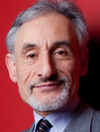 Biography
BiographyAndrew Blake is a Microsoft Distinguished Scientist and the Laboratory Director of Microsoft Research Cambridge, England. He joined Microsoft in 1999 as a Senior Researcher to found the Computer Vision group. In 2008 he became a Deputy Managing Director at the lab, before assuming his current position in 2010. Prior to joining Microsoft Andrew trained in mathematics and electrical engineering in Cambridge England, and studied for a doctorate in Artificial Intelligence in Edinburgh. He was an academic for 18 years, latterly on the faculty at Oxford University, where he was a pioneer in the development of the theory and algorithms that can make it possible for computers to behave as seeing machines.
-
 Proving That Programs Eventually Do Something Good
Proving That Programs Eventually Do Something Good- Watch the Session
Abstract
Software failures can be sorted into two groups: those that cause the software to do something wrong (e.g., crashing), and those that result in the software not doing something useful (e.g., hanging). In recent years automatic tools have been developed which use mathematical proof techniques to certify that software cannot crash. But, based on Alan Turing’s proof of the halting problem’s undecidability, many have considered the dream of automatically proving the absence of hangs to be impossible. While not refuting Turing’s original result, recent research now makes this dream a reality. This lecture will describe this recent work and its application to industrial software.
Biography
Dr. Byron Cook is a Principal Researcher at Microsoft Research Cambridge where he manages the Programming Principles and Tools group (opens in new tab) as well as Professor of Computer Science at University College London (UCL). He is one of the developers of the Terminator program termination proving tool, as well as the SLAM software model checker. Learn more (opens in new tab).
-
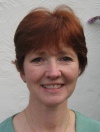 How to Present a Poster at an International Conference (opens in new tab)
How to Present a Poster at an International Conference (opens in new tab)- Watch the Session
Abstract
Presenting a poster at an international conference is a terrific opportunity to promote your research and raise your professional profile in a global academic forum. However, it can be daunting to compete with other presenters to get the attention of a passing audience. As well as a clear and captivating poster, you need the ability to build rapport quickly and present your subject positively and succinctly.
This can be especially challenging when English is the shared language but not everyone’s mother tongue. Whether you are a native or a non-native English speaker, you will require flexibility and sensitivity to others in order to get your message across clearly.
During the three poster sessions, Sue will be hovering in the room, watching and listening to your approach. She will then prepare to highlight on the final day the key thought-processes as well as the verbal and non-verbal skills you need to give a powerful poster presentation.
Sue will also be available on Thursday afternoon to provide confidential one-to-one feedback for any students who are interested.
Biography
Sue Duraikan runs Duraikan Training, a consultancy which aims to help individuals and organisations develop. Duraikan Training provides support in designing and delivering learning strategies. We also run training sessions and one-to-one coaching on a wide range of professional skills. As a former teacher of Modern Languages and with wide experience of working globally, Sue Duraikan has a particular interest in cross-cultural communication, and deep respect for those who operate daily in a second or third language.
-
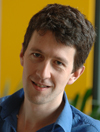 3D Vision in a Changing World (opens in new tab)
3D Vision in a Changing World (opens in new tab)- Watch the Session
Abstract
3D reconstruction from images has been a tremendous success-story of computer vision, with city-scale reconstruction now a reality. However, these successes apply almost exclusively in a static world, where the only motion is that of the camera. Even with the advent of real-time depth cameras, full 3D modelling of dynamic scenes lags behind the rigid-scene case, and for many objects of interest (e.g., animals moving in natural environments), depth sensing remains challenging. In this talk, I will discuss a range of recent work in the modelling of nonrigid real-world 3D shape from 2D images, for example building generic animal models from internet photo collections. While the state of the art depends heavily on dense point tracks from textured surfaces, I will talk about recovering shape from largely textureless objects such as dolphins, by incorporating the strong constraints given by the object’s silhouette.
Biography
Andrew Fitzgibbon is a principal researcher at Microsoft Research, Cambridge, UK. His research interests are in the intersection of computer vision and computer graphics, with rare excursions into neuroscience. Recent papers have been on models of nonrigid motion, human 3D perception, new image-processing models, large-scale image search, and nonlinear optimization.
He has co-authored “best papers” at ICCV (2x), CVPR (2x), ISMAR (2x), and BMVC, and software he wrote won an Engineering Emmy Award in 2002 for significant contributions to the creation of complex visual effects. He studied at University College Cork, at Heriot-Watt University, and received his PhD from Edinburgh University in 1997. Until June 2005 he held a Royal Society University Research Fellowship at Oxford University’s Department of Engineering Science.
-
 Strategic Thinking for Researchers (opens in new tab)
Strategic Thinking for Researchers (opens in new tab)Abstract
From time to time at Microsoft Research we set aside time to talk about strategic aspects of research, that is, the big picture of why we do research and how to have different sorts of impact, beyond the more immediate tasks of writing papers, giving talks, and transferring ideas. This talk will cover some of these strategies for having a happy and productive career as a researcher.
Biography
Andy Gordon is a Principal Researcher at Microsoft Research Cambridge, and is a Professor at the University of Edinburgh. Andy wrote his PhD on input/output in lazy functional programming, and is the proud inventor of Haskell’s “>>=” notation for monads. He’s worked on a range of topics in concurrency, verification, and security, never straying too far from his roots in functional programming. His current passion is deriving machine learning algorithms from F# programs.
-
 Human Computing and Crowdsourcing in Search Evaluation
Human Computing and Crowdsourcing in Search EvaluationAbstract
Human Computation (HC) is a new paradigm fuelled, for a large part, by the increasing use of machine learning, that relies on large amounts of labelled training data, in a wide range of applications. HC systems organise human effort to carry out tasks that computers cannot do well, like detecting objects in videos or judging the usefulness of search results. In this paradigm, humans become a type of processing unit. Crowdsourcing is a tool for distributing the computation tasks to the human processors. Through commercial crowdsourcing platforms, like Amazon’s Mechanical Turk, crowdsourcing has reached an industrial scale, involving millions of Internet users. However, unlike computer processors that are manufactured to a given standard, humans are, well, human. They have different backgrounds and skills, and are influenced by a great many things, including their own selfish motives and aspects of the task itself. In this lecture we use the evaluation of search engines as a context for studying various aspects of crowdsourcing. For example, we study how the amount of pay or the amount of effort required to complete a task relates to the quality of the crowdsourced data and the behaviours of crowd workers.
Biography
Gabriella Kazai is a research consultant, working for the Relevance Measurement team at Microsoft Bing, Bellevue, US and the Integrated Systems group at Microsoft Research, Cambridge, UK. Her research interests include crowdsourcing, IR evaluation measures and test collection building, social information retrieval, information seeking behaviour and browsing, personal information management, book search and personal digital libraries. She is co-founder and organiser of the TREC Crowdsourcing Track since 2011 and the INEX Book Track since 2007. Gabriella holds a PhD in Computer Science from Queen Mary University of London. She published over 90 papers and organised several IR conferences and workshops.
-
Rough Guide to Being an Entrepreneuer (opens in new tab)
Abstract
At some stage, you might want to exploit your ideas by starting a company, just as Bill Gates and Paul Allen did in 1975. It might even be the next Microsoft, or bought by them. I’ll give an overview of the process, explain some of the success factors investors look for, and how to go about writing a business plan and getting off the ground.
Biography
Jack Lang is a serial entrepreneur and business angel with high-tech and Internet companies based in Cambridge, where he is Entrepreneur in Residence, Centre for Entrepreneurial Learning, at the Judge Business School, University of Cambridge, an affiliated lecturer and member of the Faculty Board at the Computer Lab and a by-fellow of Emmanuel College. His latest venture is Raspberry Pi, a $25 computer for education. Previously, he was founder of Netchannel Ltd, an early interactive TV company that was acquired by ntl—where he became chief technologist. Before that, he founded Electronic Share Information Ltd, one of the first online brokerages, acquired by E*Trade Inc. Prior to that, he started a consultancy (now SAIC UK Ltd) that was involved in the early days of the “Cambridge Phenomenon”, and was a proper academic at the Computer Lab. He is author of The High-Tech Entrepreneur’s Handbook (FT.Com/Prentice Hall 2001). He has other interests in molecular gastronomy and fireworks.
-
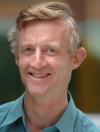 How to Write a Great Research Peper (opens in new tab)
How to Write a Great Research Peper (opens in new tab)How to Give a Great Research Talk
Abstract
Writing papers and giving talks are key skills for any researcher, but they aren’t easy. In this pair of presentations, I’ll describe simple guidelines that I follow for writing papers and giving talks, which I think may be useful to you too. I don’t have all the answers—far from it—and I hope that the presentation will evolve into a discussion in which you share your own insights, rather than a lecture.
Biography
Simon Peyton Jones, MA, MBCS, CEng, graduated from Trinity College Cambridge in 1980. After two years in industry, he spent seven years as a lecturer at University College London, and nine years as a professor at Glasgow University, before moving to Microsoft Research in 1998. His main research interest is in functional programming languages, their implementation, and their application. He has led a succession of research projects focused around the design and implementation of production-quality functional-language systems for both uniprocessors and parallel machines. He was a key contributor to the design of the now-standard functional language Haskell, and is the lead designer of the widely used Glasgow Haskell Compiler (GHC). He has written two textbooks about the implementation of functional languages. More generally, he is interested in language design, rich type systems, software component architectures, compiler technology, code generation, runtime systems, virtual machines, garbage collection, and more. He is particularly motivated by direct use of principled theory to practical language design and implementation—that’s one reason he loves functional programming so much. He is also keen to apply ideas from advanced programming languages to mainstream settings.
-
 Software for Programming Cells
Software for Programming CellsCells are the building blocks of life. If we could program living cells as effectively as we program digital computers we could make breakthroughs in medical treatment, sustainable agriculture and clean energy, while also better understanding of how living systems compute. In spite of this potential there are still many challenges to overcome. Programming cells is highly complex and error-prone, and we are at a point where powerful computer software is needed to accelerate further progress. This talk presents ongoing work to develop computer software for programming cells at three levels: molecular circuits, genetic devices and cell colonies. We present software for programming molecular circuits made of DNA, and for characterising genetic parts that can be combined into devices for programming cell function. Finally, we present software for simulating cell biofilms using 3D biophysical methods, which can be used to predict the effect of cell shape on colony morphology. Just as software for programming digital computers heralded a new era of technology, software for programming cells could enable new industries in biotechnology.
Andrew Phillips is head of the Biological Computation Group in the Computational Science Lab at Microsoft Research Cambridge, where he is conducting research into programming languages and methods for simulating and analysing biological systems. Andrew received a postgraduate degree in Computer Science from the University of Cambridge, under a scholarship from the Barbados government. He pursued a PhD in the Department of Computing at Imperial College London, where he worked on theory and implementation of concurrent, distributed programming languages. He joined Microsoft Research Cambridge in 2005, to conduct research at the intersection of programming language theory and biological modelling. In 2011 he received a Technology Review TR35 award for work on software for computer-assisted genetic engineering. The award recognises technology innovators under the age of 35. His hobbies include snowboarding and kite-surfing.
-
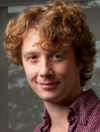 Modelling All Life on Earth. Yes, Really!
Modelling All Life on Earth. Yes, Really!Abstract
The Computational Ecology and Environmental Science group at Microsoft Research Cambridge, along with the United Nations Environment Program World Conservation Monitoring Centre, have built a model that simulates the fate of, and interactions among, every animal on Earth. That means every aphid, cow, shark, copepod, rabbit, squid, giraffe, crow, centipede… well, you get the idea! Why would we attempt such a thing? How did we build it? Does it work? And what are we going to do with it?
Biography
I am head of the Computational Ecology and Environmental Science Group (CEES), a part of the Computational Science Lab at Microsoft Research Cambridge. The goal of CEES is to develop predictive models of ecological systems, by inventing and applying new models and new scientific software tools. I studied ecology at Cambridge University, did a PhD in ecological modelling at the University of York (UK, working under Prof. Richard Law), and spent nearly 6 years as a postdoc in the EEB Department at Princeton University (working under Prof. Stephen Pacala), before joining MSR Cambridge in 2007. My research has led to over 40 publications in peer-reviewed journals including Science, PNAS, Proc Roy Soc B, Global Change Biology, Ecology, Ecological Monographs and Ecology Letters. I co-supervise several PhD students at European universities (see below), and since 2008 have been an affiliate lecturer at Cambridge University. I am currently the treasurer of the British Ecological Society (opens in new tab).
-
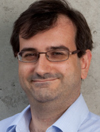 The Data Center Hardware is Changing, but do the Applications Care?
The Data Center Hardware is Changing, but do the Applications Care?Abstract
Very different system architectures for commodity data centers clusters are beginning to emerge, motivated by the need to increase server density and reduce costs. In particular, we are seeing the emergence of rack-scale distributed interconnect fabrics, for example in the AMD SeaMicro and Calexda-based clusters. Many companies are beginning to explore these new approaches and they could prove to be highly disruptive. From a software perspective, what does this mean for the applications and operating systems that run in the data center? Is it a case of new hardware new opportunities, or are these change even going to be visible to the software running on these data centers?
In this talk, I will describe some of the innovations we are seeing in cluster design, try to give a feel for why they are happening and highlight how they could impact commodity data center software in the future. I’ll the talk about some of the work we have been doing in trying to exploit some of these hardware changes in the software stack.
Biography
Ant Rowstron is a Principal Researcher at Microsoft Research in Cambridge, UK. His research interests are broad, covering the spectrum of systems, distributed systems and networking. nHe received an MEng degree in Computer Systems and Software Engineering in 1993 from the University of York, UK, and a DPhil degree in Computer Science in 1996 also from the University of York, UK. He has worked in the Computer Laboratory at Cambridge University, UK as a Research Associate and as a Senior Research Associate in Laboratory for Communications Engineering in the Engineering Department, Cambridge University. Since 1999 he has worked for Microsoft Research in Cambridge, UK.
-
 PhD Summer School 2013 (opens in new tab)
PhD Summer School 2013 (opens in new tab)Biography
Scarlet Schwiderski-Grosche is a Research Program Manager at Microsoft Research Cambridge, working for Microsoft Research Connections in the EMEA region. As such, she is in charge of the Microsoft Research PhD Scholarship Programme and coordinates a number of research projects.
Scarlet has a PhD in Computer Science from University of Cambridge. She was in academia for almost 10 years before joining Microsoft in March 2009. In academia, she worked as Lecturer in Information Security at Royal Holloway, University of London.
-
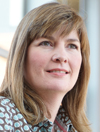 Transformations in HCI: from Human Factors to Human Values (opens in new tab)
Transformations in HCI: from Human Factors to Human Values (opens in new tab)Abstract
Human-Computer Interaction or HCI is now more than three decades old, and started as a clarion call to take the user into account when we design new technologies. Indeed, most of us will be familiar with the idea of “user testing” and even “user experience design” as two of the main concepts which have emerged from the field. But in this talk I want to talk about how HCI has evolved not just as a multidisciplinary field of researchers and designers that strive to optimise the user interface, but as a community of people who are seeking to understand how computers are radically transforming our lives, and how we in turn transform technologies. Five years ago, we published a kind of manifesto in which we tried to chart these transformations. This document, called “Being Human: Human-Computer Interaction in the year 2020”, attempted to look forward to the ways in which our fundamental notions of such basic things as what a computer is, what the nature of interaction is, and what a user is, are changing forever. We argued at the time that these changes also signalled a need to think not just about designing for human factors, but human values. In this session I will explore this argument, using recent developments in “natural user interaction” as an example. By doing so, I hope to convince you of the importance of HCI in not just pushing the boundaries of technology and design, but in thinking about how we define our own humanity in the Digital Age.
Biography
Abigail Sellen is a Principal Researcher at Microsoft Research Cambridge UK and co-manager of Socio-Digital Systems, an interdisciplinary group with a focus on the human perspective in computing. Originally graduating with a PhD in Cognitive Science, and a Master’s in Industrial Engineering, her career has spanned industrial research labs such as Apple Computer, Xerox’s Cambridge Research Centre and Hewlett Packard, Bristol. She has filed more than 50 patents, and published widely in Human-Computer Interaction. This includes “The Myth of the Paperless Office” with co-author Richard Harper, which won an IEEE award. She is a Fellow of the Royal Academy of Engineering, a Fellow of the British Computer Society, a Professor of Interaction at the University of Nottingham, and a member of the ACM SIGCHI Academy.
-
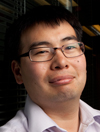 Cloud Computing—Big Data and Beyond
Cloud Computing—Big Data and Beyond- Watch the Session
Abstract
We live in an information society, with cloud computing is changing the way we live, work and play in a world of devices and services. In this talk we’ll explore what, why and how this new era of computing is changing the way we think about conceiving, developing and delivering software and services. We’ll then look at how the concept of Big Data is transforming science, and the opportunities it presents for the future.
This talk will be followed by a hands-on Windows Azure (opens in new tab) workshop.
Biography
Dr Kenji Takeda is Solutions Architect and Technical Manager for the Microsoft Research Connections EMEA team. He has extensive experience in Cloud Computing, High Performance and High Productivity Computing, Data-intensive Science, Scientific Workflows, Scholarly Communication, Engineering and Educational Outreach. He has a passion for developing novel computational approaches to tackle fundamental and applied problems in science and engineering. He was previously Co-Director of the Microsoft Institute for High Performance Computing, and Senior Lecturer in Aeronautics, at the University of Southampton (opens in new tab), UK. There he worked with leading high value manufacturing companies such as Airbus, AgustaWestland, BAE Systems, Rolls-Royce and Formula One teams, to develop state-of-the-art capability for improving science and engineering processes. He also worked in the areas of aerodynamics, aeroacoustics and flight simulation.
-
Intellectual Property at Microsoft
Abstract
Intellectual Property represents a sea change in how businesses use ideas to innovate, differentiate, and win in the marketplace. Much of the innovations today change the way people work, interact, and play and IP is changing the very landscape of doing business for industry, governments, educators, and consumers. But what, exactly, does someone mean when they refer to “intellectual property?” In this presentation, we will look at the different types of IP what makes IP strong or weak, and how entities can use them to remain relevant and competitive in the marketplace.
Biography
Pablo Tapia is the subsidiary attorney for the Microsoft Research Lab in Cambridge, UK, and the Advanced Technology Centers in Aachen (Germany), Herzliya (Israel), and Cairo (Egypt). In addition to patent issues, Pablo counsels clients on general IP issues, open source, EU funding engagements, university engagements, data protection, and licensing. Pablo has also managed patent portfolios for other Microsoft’s R&D efforts including Microsoft Research labs in China, India and Redmond.
Before joining Microsoft, Pablo was a patent attorney at Greenberg Traurig in Los Angeles and a software engineer at Motorola. Pablo received both his JD and B.S. Computer Science from Arizona State University, and is admitted to practice in California, Arizona, and the US Patent and Trademark Office.
